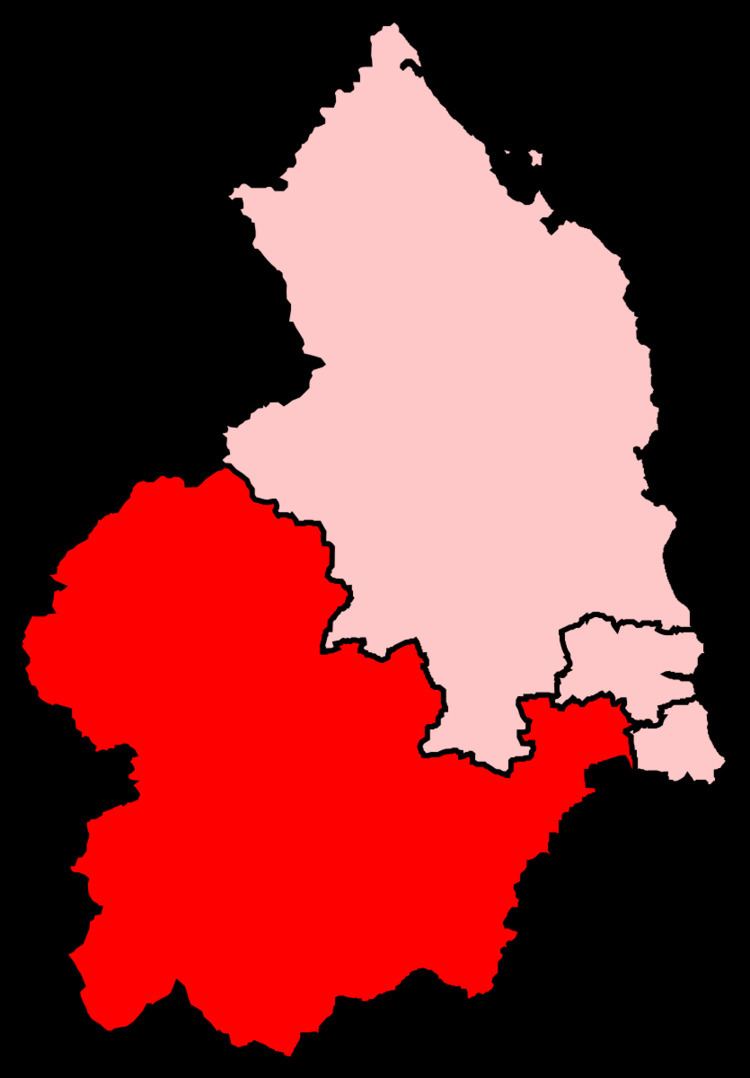Created 1885 | Electorate 60,499 (December 2010) European Parliament constituency North East England Number of members 1 | |
 | ||
Major settlements Replaced by North Northumberland, South Northumberland | ||
Hexham is a constituency in Northumberland represented in the House of Commons of the UK Parliament since 2010 by Guy Opperman, a Conservative.
Contents
Constituency profile
This large seat reaches to the Pennines and traverses Hadrians Wall which runs almost due east–west through England, includes substantial agricultural holdings, forestry, wood processing, food, minerals, and manufactured hardware industries and has been held by the Conservative Party and rarely with only marginal majorities since 1924. In the midst of the northwest of the area is Kielder Water and running between this area and the middle of the seat is the southern portion of Kielder Forest, and in the west, the attractions of the precipitous Haltwhistle Burn, Viaduct and Castle. SSE of Hexham is the Derwent Reservoir. Aside from the geographical highlights as set out above this area also houses a portion of Newcastle's commuting middle-class; Hexham was the only Conservative seat in the North East between 1997–2010, and the only one in Northumberland from 1973 until the Conservatives won Berwick-upon-Tweed in 2015.
Demonstrated by latest published old age dependency ratios, a slightly larger than national average proportion of the electorate is retired. Whilst the result in 1997 saw the Labour Party within touching distance of winning the seat generally, results suggest the seat is a safe seat for candidates of the Conservative party.
History
The seat was created under the Redistribution of Seats Act 1885. Colonel Douglas Clifton Brown, who was Speaker of the House of Commons during the latter years of the World War II, represented the seat for two separate tenures (from 1918–23, and from 1924–51).
Boundaries
The constituency is named after the town of Hexham in Northumberland. It includes the former Tynedale district and part of the former Castle Morpeth district.
Boundary review
Following their review of parliamentary representation in Northumberland, the Boundary Commission for England has made only minor changes to the existing boundaries of the Hexham constituency. The electoral wards used in its formation are:
Elections in the 1940s
Elections in the 1910s
General Election 1914/15:
Another General Election was required to take place before the end of 1915. The political parties had been making preparations for an election to take place and by the July 1914, the following candidates had been selected;
